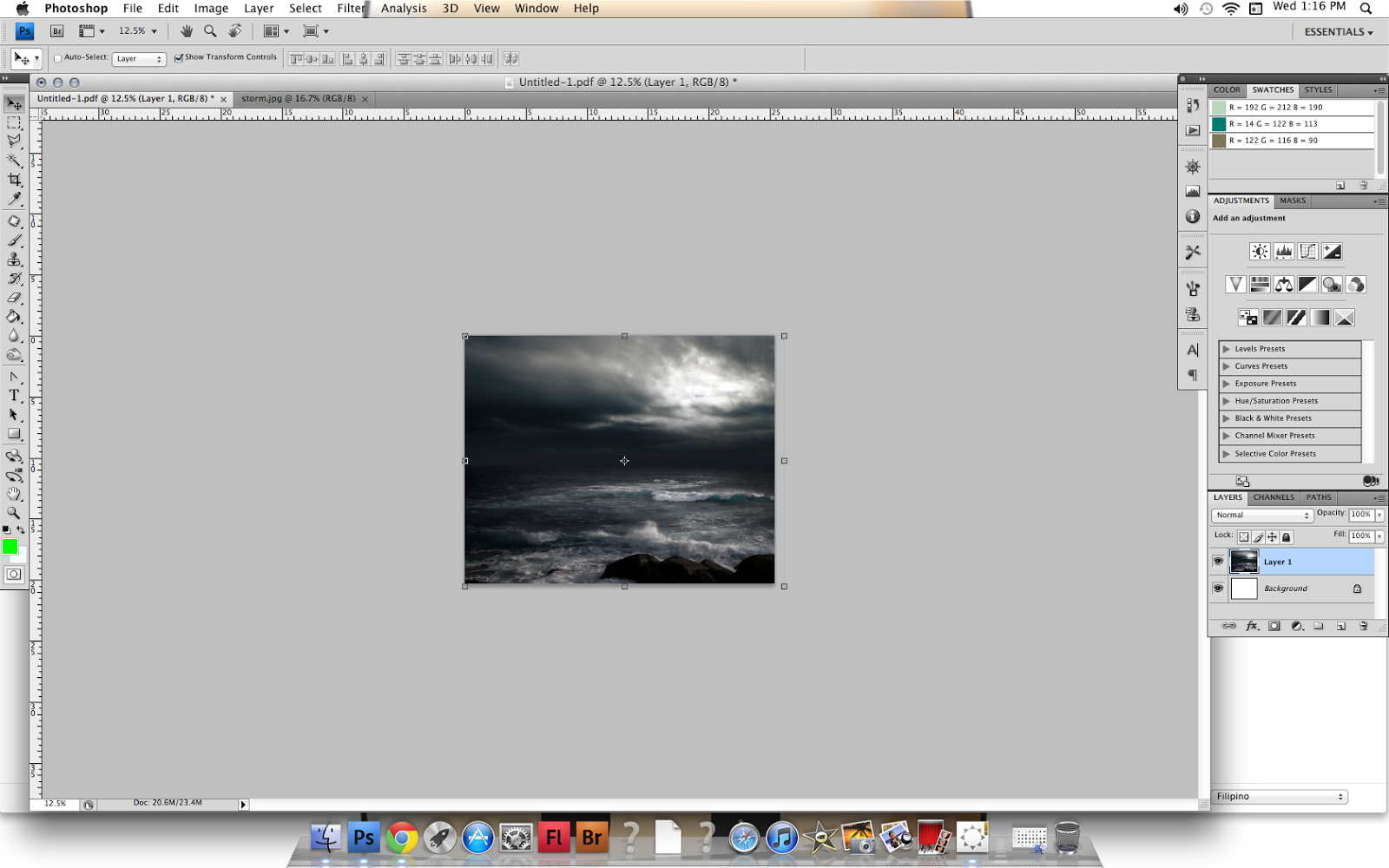Colors
Color Space. The three essential parameters hue, saturation, and brightness.


Reference:
http://www.techterms.com/definition/cmyk
http://en.wikipedia.org/wiki/Adobe_RGB_color_space
http://en.wikipedia.org/wiki/ProPhoto_RGB_color_space
http://www.myphotocentral.com/articles/choosing-color-space-srgb-adobe-rgb-prophoto/
http://en.wikipedia.org/wiki/Color_space
http://en.wikipedia.org/wiki/Lab_color_space

A wide range of colors can be created by the subtractive primary colors of pigment (cyan (C), magenta (M), yellow (Y), and black (K)). Those colors then define a specific color space. To create a three-dimensional representation of a color space, we can assign the amount of magenta color to the representation's X axis, the amount of cyan to its Y axis, and the amount of yellow to its Z axis. The resulting 3-D space provides a unique position for every possible color that can be created by combining those three pigments.
Lab Color Space. A color-opponent space with dimension L for lightness and a and b for the color-opponent dimensions, based on nonlinearly compressed CIE XYZ color space coordinates. The dimensions of the Hunter 1948 L, a, b color space are L, a, and b. However, Lab is now more often used as an informal abbreviation for the CIE 1976 (L*, a*, b*) color space (or CIELAB). The difference between Hunter and CIE color coordinates is that the CIE coordinates are based on a cube root transformation of the color data, while the Hunter coordinates are based on a square root transformation.
ProPhoto RGB. An output referred RGB color space developed by Kodak. It offers an especially large gamut designed for use with photographic output in mind. The ProPhoto RGB color space encompasses over 90% of possible surface colors. This color space covers the largest range of colors and even goes beyond of what our eyes can see. To achieve this range you must shoot in RAW format and open your digital negative with ProPhoto RGB color space in 16-bit mode.
Adobe RGB 1998. an RGB color space developed by Adobe Systems, Inc. in 1998. It was designed to encompass most of the colors achievable on CMYK color printers, but by using RGB primary colors on a device such as a computer display. The Adobe RGB color space encompasses roughly 50% of the visible colors specified by the Lab color space as well as improves upon the gamut of the sRGB color space, primarily in cyan-greens.This is a wider color space, which encompasses around 50% of all visible colors (as defined by CIE), it is a good choice for editing in 8-bit or 16-bit modes and typically carries more information for print.
sRGB. A color space produced by HP and Microsoft in the late 90s. Since this color space was backed up by industry leading giants it quickly became popular with all image driven mediums such as cameras, monitors, scanners, and printers. sRGB has the smallest range of tones and colors (about 35% of the full International Commission on Illumination (CIE) range) out of the three most popular color spaces, but it is the most versatile and widely used.
CMYK. Stands for "Cyan Magenta Yellow Black." These are the four basic colors used for printing color images. Unlike RGB (red, green, blue), which is used for creating images on your computer screen, CMYK colors are "subtractive." This means the colors get darker as you blend them together. Since RGB colors are used for light, not pigments, the colors grow brighter as you blend them or increase their intensity.

Reference:
http://www.techterms.com/definition/cmyk
http://en.wikipedia.org/wiki/Adobe_RGB_color_space
http://en.wikipedia.org/wiki/ProPhoto_RGB_color_space
http://www.myphotocentral.com/articles/choosing-color-space-srgb-adobe-rgb-prophoto/
http://en.wikipedia.org/wiki/Color_space
http://en.wikipedia.org/wiki/Lab_color_space



Comments
Post a Comment